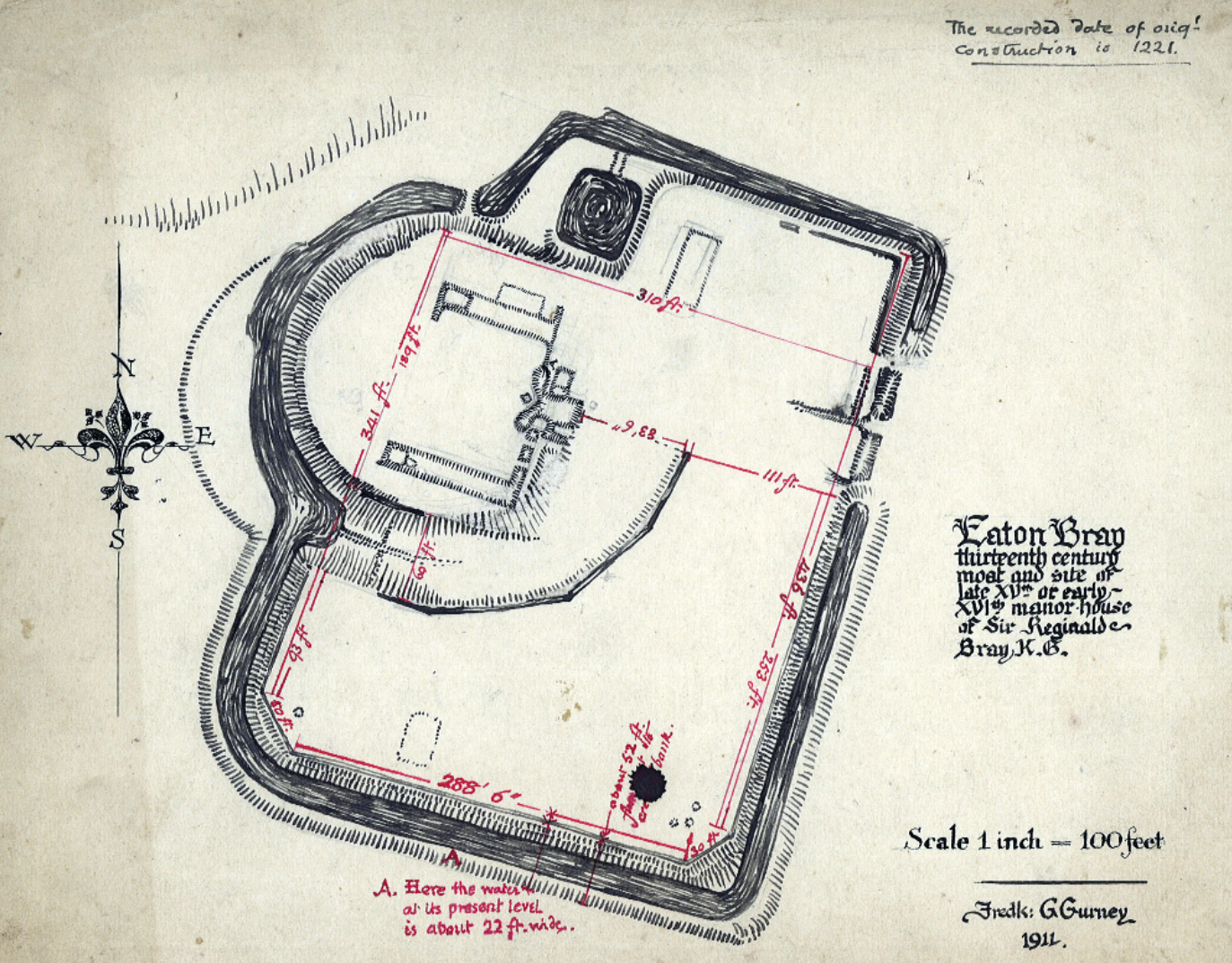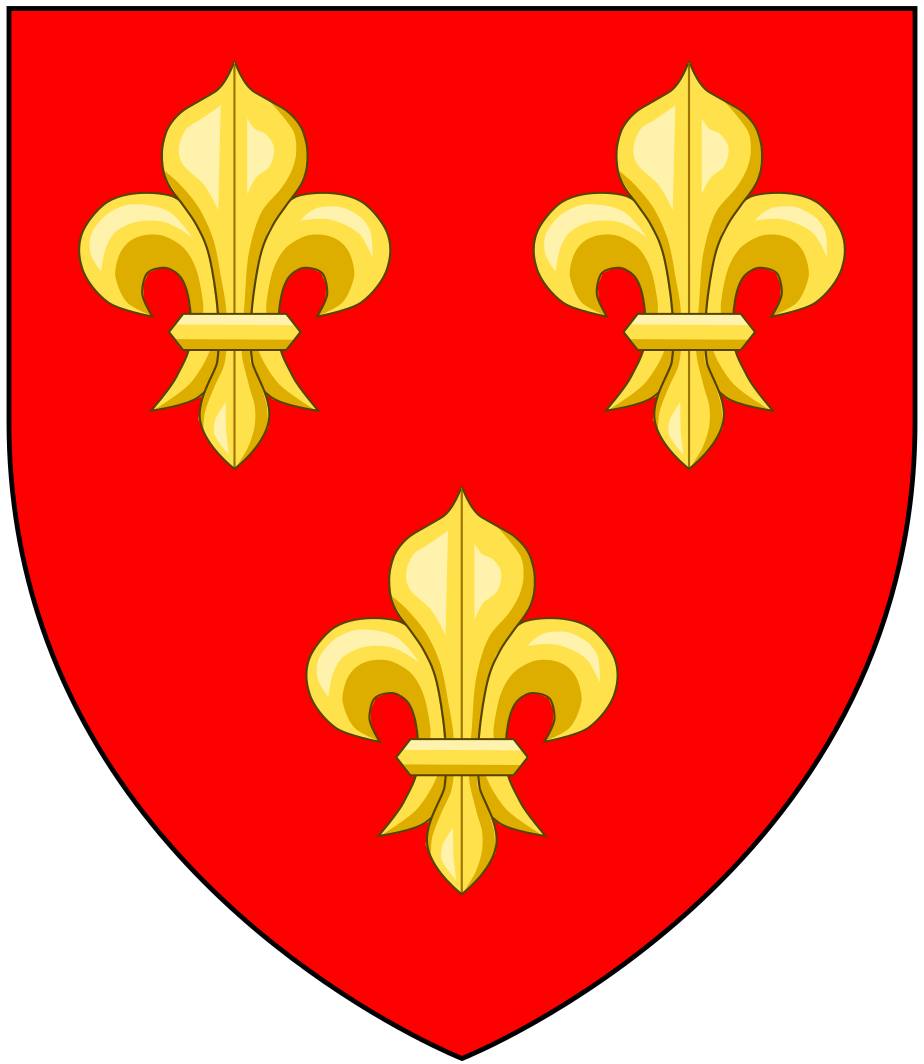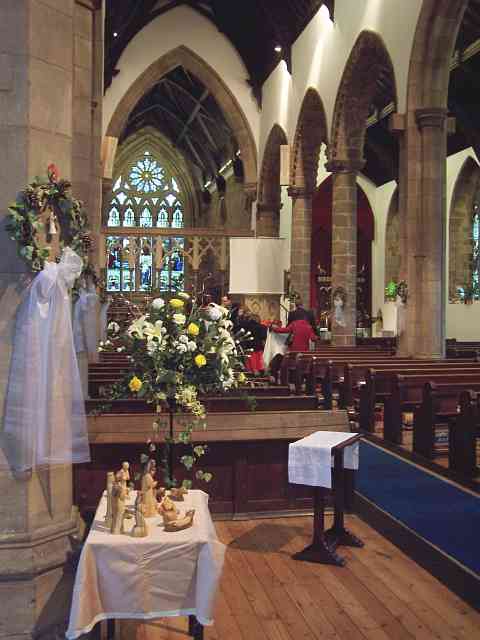|
William De Cantilupe, 1st Baron Cantilupe
William de Cantilupe, 1st Baron Cantilupe (1262-1308) of Greasley Castle in Nottinghamshire and of Ravensthorpe Castle in the parish of Boltby, North Yorkshire, was created Baron Cantilupe in 1299 by King Edward I. He was one of the magnates who signed and sealed the Barons' Letter of 1301 to the pope and was present at the Siege of Caerlaverock Castle in Scotland in 1300, when his armorials were blazoned in Norman-French verse in the Caerlaverock Roll. Origins He was born in 1262 at Lenton Priory in Nottinghamshire (to which his maternal ancestors the de Greasley family had been benefactors), the son and heir of Sir Nicholas de Cantilupe (d.1266) of Withcall (an ancient Cantilupe possession) in Lincolnshire, Greasley in Nottinghamshire and Ilkeston in Derbyshire, by his wife Eustachia FitzHugh, daughter and heiress of Ralph FitzHugh of Greasley (whose mother was Agnes de Greasley, heiress of Greasley and Ilkeston) and of Middle Claydon in Buckinghamshire. William's father ... [...More Info...] [...Related Items...] OR: [Wikipedia] [Google] [Baidu] |
Ilkeston
Ilkeston is a town in the Borough of Erewash, Derbyshire, England, on the River Erewash, from which the borough takes its name, with a population at the 2011 census of 38,640. Its major industries, coal mining, iron working and lace making/textiles, have now all but disappeared. The town is close to both Derby and Nottingham and is near the M1 motorway and the border with Nottinghamshire. The eastern boundary of Ilkeston is only two miles from Nottingham's western edge and it is part of the Nottingham Urban Area. History and culture Ilkeston was probably founded in the 6th century AD, and gets its name from its supposed founder, Elch or Elcha, who was an East Anglia, Anglian chieftain ("Elka's Tun" = Elka's Town). The town appears as Tilchestune in the Domesday Book of 1086, when it was owned principally by Gilbert de Ghent. Gilbert also controlled nearby Shipley, Derbyshire, Shipley, West Hallam and Stanton by Dale.''Domesday Book: A Complete Translation''. London: Penguin, 20 ... [...More Info...] [...Related Items...] OR: [Wikipedia] [Google] [Baidu] |
Walter De Cantilupe
Walter de Cantilupe (died 1266) was a medieval Bishop of Worcester. Early life and career Cantilupe came from a family that had risen by devoted service to the crown. His father, William I de Cantilupe,British History Online Bishops of Worcester accessed on 3 November 2007 and his elder brother were named by among the evil counsellors of King |
William De Cantilupe (died 1239)
William I de Cantilupe (c. 1159 - 7 April 1239) (anciently ''Cantelow, Cantelou, Canteloupe, etc.'', Latinised to ''de Cantilupo'') 1st feudal baron of Eaton (Bray) in Bedfordshire, England, was an Anglo-Norman royal administrator who served as steward of the household to King John and as Baron of the Exchequer. Origins He was born in about 1159 in Buckinghamshire, the son of Walter de Cantilupe, recorded in 1166 as a minor landowner in Essex and Lincolnshire, who was a younger brother of Fulk de Cantilupe (died 1217/18), Sheriff of Berkshire in 1200/1. The de Cantilupe family which came to England at some time after the Norman Conquest of 1066 originated at one of several similarly named manors in Normandy, from which they took their name: Canteloup in Calvados, 11 miles east of Caen or Chanteloup in Bréhal, Manche, or Canteloup in Manche east of Cherbourg on the tip of the Cherbourg Peninsula. Career Under King John In 1198 Cantilupe was steward to John, Count of Mort ... [...More Info...] [...Related Items...] OR: [Wikipedia] [Google] [Baidu] |
Feudal Barony Of Eaton Bray
The feudal barony of Eaton Bray in Bedfordshire was an English feudal barony founded in 1205 when the manor of Eaton (from 16th-century "Eaton Bray") was granted by King John to his household steward William I de Cantilupe (d.1239), together with many others, including Aston (later ''Aston Cantlow'') in Warwickshire. In 1221 Cantilupe built a castle at Eaton, which became the ''caput'' of his feudal barony and was described by the monks of nearby Dunstable Priory in the ''Annals of Dunstable'' as being "a serious danger to Dunstable and the neighbourhood". The grant was for knight-service of one knight and was in exchange for the manor of Great Coxwell, Berkshire, which had been granted to him previously but the grant was deemed compromised. Eaton had been held at the time of William the Conqueror by the latter's uterine half-brother Odo, Bishop of Bayeux, but later escheated to the crown. The de Cantilupe family which came to England at some time after the Norman Conquest of ... [...More Info...] [...Related Items...] OR: [Wikipedia] [Google] [Baidu] |
William De Cantilupe (died 1251)
William II de Cantilupe (died 1251) (anciently ''Cantelow, Cantelou, Canteloupe, etc'', Latinised to ''de Cantilupo''), 2nd feudal baron of Eaton Bray in Bedfordshire, was an Anglo-Norman magnate. Origins He was the eldest son and heir of William I de Cantilupe (died 1239), 1st feudal baron of Eaton Bray, steward of the household to King John, a royal administrator and sheriff, by his wife Mazilia de Braci. His younger brother was Walter de Cantilupe (1195-1266), Bishop of Worcester. Career He became a retainer of Ranulf de Blondeville, 6th Earl of Chester and served with him on King Henry III's expedition to Brittany. In 1238 he joined the royal household of King Henry III (son of King John) and was appointed Sheriff of Nottinghamshire and Derbyshire in 1239. In 1242 he was one of the three Keepers of the Realm during the king's absence campaigning in Poitou. Marriage and children He married Millicent (or Maud) de Gournai (d.1260), a daughter of Hugh de Gournai and widow of A ... [...More Info...] [...Related Items...] OR: [Wikipedia] [Google] [Baidu] |
Belvoir Castle
Belvoir Castle ( ) is a faux historic castle and stately home in Leicestershire, England, situated west of the town of Grantham and northeast of Melton Mowbray. The Castle was first built immediately after the Norman Conquest of 1066 and has since been rebuilt at least three times, the surviving structure, a grade I listed mock castle, dating from the early 19th century. It is the seat of David Manners, 11th Duke of Rutland (the tiny county of Rutland lies south of Belvoir Castle), whose direct male ancestor inherited it in 1508. The traditional burial place of the Manners family was in the parish church of St Mary the Virgin, Bottesford, situated to the north of the Castle, but since 1825 they have been buried in the ducal mausoleum built next to the Castle in that year, to which their ancient monuments were moved. It remains the private property of the Duke of Rutland but is open to the general public. The castle is situated at the extreme northern corner of the co ... [...More Info...] [...Related Items...] OR: [Wikipedia] [Google] [Baidu] |
William Ros, 1st Baron Ros
William Ros or Roos, 1st Baron Ros of Helmsley (c. 1255 – 6 or 8 August 1316), was one of the claimants of the crown of Scotland in 1292 during the reign of Edward I. Family William Ros was the eldest son of Robert de Ros (d. 17 May 1285) of Helmsley, Yorkshire, and Isabel d'Aubigny (c. 1233 – 15 June 1301), daughter and heiress of William D'Aubigny of Belvoir, Leicestershire, and granddaughter of William d'Aubigny. He had four brothers and three sisters: *Sir Robert Ros of Gedney, Lincolnshire. *John Ros. *Nicholas Ros, a cleric. *Peter Ros, a cleric. *Isabel Ros, who married Walter Fauconberg, 2nd Baron Fauconberg. *Joan Ros, who married John Lovell, 1st Baron Lovell. *Mary Ros, who married William de Braose, 1st Baron Braose. Career On 24 December 1264, William's father, Robert de Ros (d. 1285), was summoned to Simon de Montfort's Parliament in London as ''Robert de Ros'', and for some time it was considered that the barony was created by writ in that year, and t ... [...More Info...] [...Related Items...] OR: [Wikipedia] [Google] [Baidu] |
Ingmanthorpe, North Yorkshire
Ingmanthorpe is a hamlet close to the village of Kirk Deighton in North Yorkshire, England, the village is situated approximately north of the town of Wetherby in neighbouring West Yorkshire. Ingmanthorpe is situated close to the A1(M) and Wetherby Service Station. Grand National winning jockey, Richard Guest, trained racehorses at Ingmanthorpe Racing Stables until his eviction in May 2021. Ingmanthorpe Hall was home to Wennington School from 1945 to 1975, and was designated a Grade II listed building In the United Kingdom, a listed building or listed structure is one that has been placed on one of the four statutory lists maintained by Historic England in England, Historic Environment Scotland in Scotland, in Wales, and the Northern Irel ... in 1966. References External links {{Commons category-inline, Ingmanthorpe, North Yorkshire Hamlets in North Yorkshire ... [...More Info...] [...Related Items...] OR: [Wikipedia] [Google] [Baidu] |
Crusade
The Crusades were a series of religious wars initiated, supported, and sometimes directed by the Latin Church in the medieval period. The best known of these Crusades are those to the Holy Land in the period between 1095 and 1291 that were intended to recover Jerusalem and its surrounding area from Islamic rule. Beginning with the First Crusade, which resulted in the recovery of Jerusalem in 1099, dozens of Crusades were fought, providing a focal point of European history for centuries. In 1095, Pope Urban II proclaimed the First Crusade at the Council of Clermont. He encouraged military support for Byzantine emperor AlexiosI against the Seljuk Turks and called for an armed pilgrimage to Jerusalem. Across all social strata in western Europe, there was an enthusiastic response. The first Crusaders had a variety of motivations, including religious salvation, satisfying feudal obligations, opportunities for renown, and economic or political advantage. Later crusades were cond ... [...More Info...] [...Related Items...] OR: [Wikipedia] [Google] [Baidu] |
St Mary's Church, Ilkeston
St Mary's Church, Ilkeston is a Grade II* listed parish church in the Church of England in Ilkeston, Derbyshire. Built in the 14th century, it is known as the "Mollis Chapel" because of a stained glass window which shows the rising sun above the cross which was fixed to it by the local saint. History The church was founded in 1150, the oldest visible part of the fabric being the three Norman arches in the south arcade which date from the close of the 12th century when the Norman Stye was changing into early English. An architectural report in 1855 said that 'no church in englan possesses any euql to them and they can never be surpassed in the lightness of their tracery. Also remarkable is the arcade between the chancel and Peter Chapel with its Early English Arches whose capitals are decorated with small bossy leaves in which can be seen the impish faces of the green men of the forest. Between the chancel and the Peter Chapel is the recumbent stone effigy and chest tomb of S ... [...More Info...] [...Related Items...] OR: [Wikipedia] [Google] [Baidu] |
Buckinghamshire
Buckinghamshire (), abbreviated Bucks, is a ceremonial county in South East England that borders Greater London to the south-east, Berkshire to the south, Oxfordshire to the west, Northamptonshire to the north, Bedfordshire to the north-east and Hertfordshire to the east. Buckinghamshire is one of the Home Counties, the counties of England that surround Greater London. Towns such as High Wycombe, Amersham, Chesham and the Chalfonts in the east and southeast of the county are parts of the London commuter belt, forming some of the most densely populated parts of the county, with some even being served by the London Underground. Development in this region is restricted by the Metropolitan Green Belt. The county's largest settlement and only city is Milton Keynes in the northeast, which with the surrounding area is administered by Milton Keynes City Council as a unitary authority separately to the rest of Buckinghamshire. The remainder of the county is administered by Buck ... [...More Info...] [...Related Items...] OR: [Wikipedia] [Google] [Baidu] |

.jpg)




